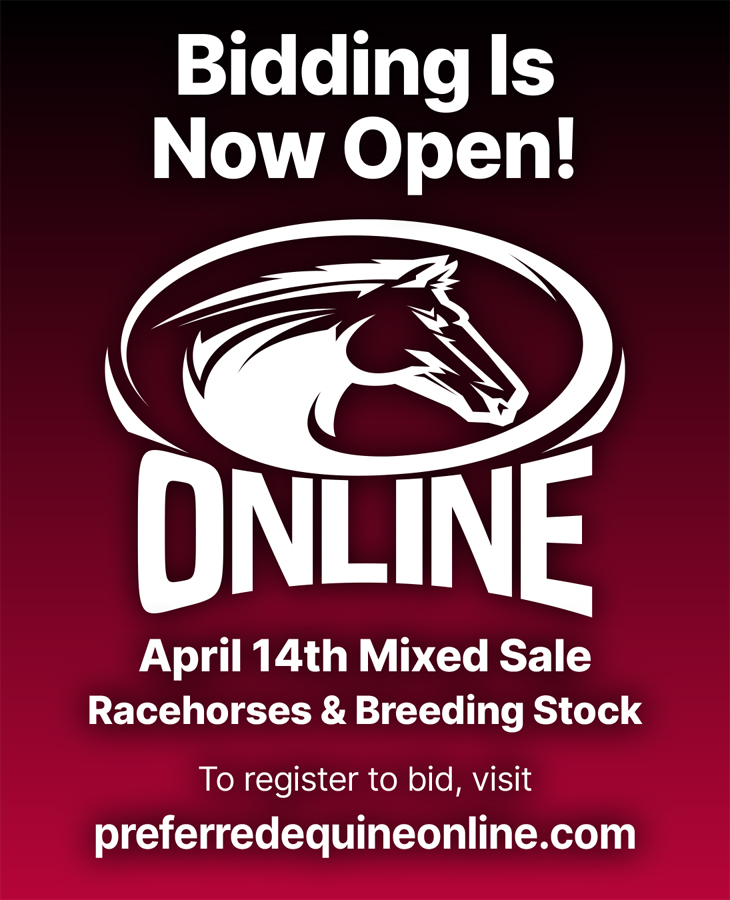Inside the mind of an unconventional breeder
by Trey Nosrac
Referring to myself as a breeder is a stretch. With one or two trotting broodmares, you could refer to me as a dabbler or, as many prefer, a delusional dolt. Nevertheless, I find the breeding section of our sport endlessly intriguing. Every foal that struggles to stand on wobbly legs is a step on a multi-year adventure that leads to those terrifying few minutes in the auction ring.
My preference is to sell the foal as a yearling, but an advantage of my small corner of the breeding world is that I can take the yearling home from the auction and head for the racetrack. Unlike commercial farms or professional breeders, the fallback position is comforting. A profit in the sales ring is my goal, but not selling is not the end of the story.
Choosing a sire for my broodmare is an exciting part of the cycle. I enjoy rolling the dice with stallions slightly off the grid. Of course, statistics support the big-name sires who send yearlings to the sales ring and eventually the racetracks. But I always wonder how many stallions come and go that do not have the cache, connections, or syndication. Apples-to-apples scenarios are challenging to make with stallions.
The window of opportunity for a new stallion is fleeting. It is an open question how the top titans in the stallion game would fare if they only got fifteen marginal mares in their first crop and a dozen in their second crop. Some weird empathy for underdog sires often finds me stallion shopping in odd places. These outlier purchases may not be wise, but they give me a warm fuzzy feeling, like buying a new barbeque grill from a Main Street hardware store instead of a Home Depot.
Some logic is involved in my choice. I make a case for each sire, admittedly a case that may not hold up under scrutiny by an expert. Great stallions are great for commercial and competitive reasons. Buyers pay jaw-dropping prices for a commercially raised yearling from top-tier stallions with deep pedigrees. Stallions with small books of mares rarely sell high. Yearlings from iffy stallions cosigned at the end of a catalog will pay the price. The breeding marketplace is what it is, and in 2021, it was terrific.
Looking back at the dozen or so stallions I have booked in my pseudo career as a breeder reveals quite the eclectic bunch. Off the top of my head, stallions in three different states, a very old stallion, first crop stallions, a very small-statured stallion, an Internet stallion breeding, a donated stallion breeding, a stallion still racing, a charity for resale breeding, a resold stallion share, a ridiculously inexpensive stallion, and the most expensive stallion in the state.
“Book Full and Closed” has never been a problem for me. Such are my chops as a breeder that the notice “Book Full and Closed” usually appears before I knew the book was open or that there even was a book published. Stallion syndication deals are not on my table because multiple breedings do not hold much value for a person with one broodmare who operates year to year.
In the long run, decisions to open the barn door to second-tier or questionable sires are probably recipes for disaster. Mercifully, a couple of foals sold decently, and most that did not sell for what I felt was market value raced decently. My only disasters were a barren season and a foal that died.
For certain personalities, coloring outside the breeding lines has a place in the breeding market. Taking a bit of a wild swing at a sire when you have one nicely bred trotter in the barn feels liberating, sort of like backing a long shot in a horserace. They might not come in, but when they do, it’s extraordinary.
My weird little world of stallion roulette has provided me with pleasure. For me, the racehorse breeding process is a nice ride. After the stallion selection, the pregnancy, and the birth, raising baby racehorses is as much fun as racing. My visits to the growing baby on the beautiful farm where my mare lives are enjoyable. Following the yearling through the consignment and selling process is exciting. Watching a yearling that you sold succeed on the racetrack is fulfilling, and if you had success with a sire that others overlooked, it adds a little extra spice.
A quick note for those who struggle to sell seats on the breeding bus – advertising your stallion works for some of us quirky customers. We check out the possibilities and enjoy sniffing around, pretending to unlock the mystery of producing an outstanding horse by finding a sire that defies the odds.
Last month, I noticed several new trotting sires heading for stud duty. Honestly, I never heard the names of some of these horses until they appeared on a website notice, advertisement, or stallion listing. I noticed some French trotters are siring American trotters. There is also a sire with a Swedish background. I noted a warhorse with an iffy pedigree that an owner wanted to give a shot at breeding. They all sound sort of cool to me, and they are all in play.
When it’s time to get down to stallion shopping, and for me, that’s a few weeks before my mare foals, the big ships will have sailed. The cream of the stallion herd will be full and closed. No problem, second and third-tier sires will be available for those of us who play in the peanut gallery.
Science, genetics, market forces, buyer preferences, statistics, and data go into selecting a stallion. For a few of us, karma and hunches are also in play.

















